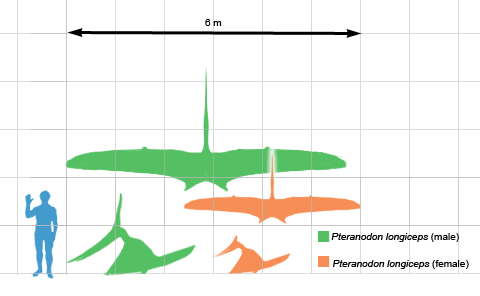 |
Sankar Chatterjee, and R. Jack Templin PNAS 2007;104:1576-1580 |
Caption for the image from the paper: Wing planform of Microraptor.(A–D) Different possible hindlimb postures during flight. (A) Hindlimb backwardly directed as in modern birds. (B–D) Biplane configuration. (B)Hindlimb backwardly sloping position. (C) Hindlimb forwardly sloping in predatory strike position. (D) Hindlimb in z-fashion with a body silhouette showing the animal in lateral view with an upwardly tilted tail for pitch control. (E) Cross-section of the tibia–fibula showing a streamlining and stretching effect of the cylindrical tibia by adding feathers caudally. (F)Cylindrical structure offers maximum resistance to the airstream as the airflow behind it becomes broken up into eddies, creating turbulence. (G) Filling the spaces in a cylindrical structure in front and behind improves streamlining, as in the case of the feathered tibia of raptors. (H) Pouncing posture of a raptor, Falco. (I) A typical staggered biplane Stearman for comparison with Microraptor; in biplane aircraft of the 1920s, there was a large additional drag of wires, struts, etc. between the two wings, which eventually made the biplane obsolete except for a niche application; such drag-induced structures were absent in Microraptor. (J) Life reconstruction of M. gui(IVPP V13352) in dorsal view showing the morphology and distribution of hindlimb feathers (Left) and orientation of the hindlimb (Right) during gliding, based on Fig. 1 A; proximal feathers on the humerus and femur are inferred (data are from ref. 12). (Scale bar, 5 cm.)








